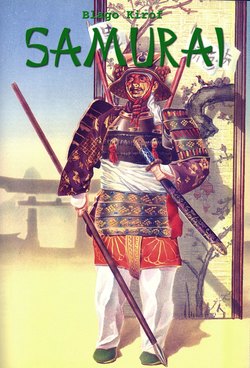Samurai

Реклама. ООО «ЛитРес», ИНН: 7719571260.
Оглавление
Blago Kirof. Samurai
Samurai
Foreword
Bushido: The Way of the Warrior
Отрывок из книги
Samurai usually referred to in Japanese as bushi or buke, were the military nobility of medieval and early-modern Japan. In Chinese, the character was originally a verb meaning to wait upon or accompany persons in the upper ranks of society, and this is also true of the original term in Japanese, saburau. In both countries the terms were nominalized to mean "those who serve in close attendance to the nobility," the pronunciation in Japanese changing to saburai.
By the end of the 12th century, samurai became almost entirely synonymous with bushi, and the word was closely associated with the middle and upper echelons of the warrior class. The samurai followed a set of rules that came to be known as Bushido. Their teachings can still be found today in both everyday life and in modern Japanese martial arts.
.....
Samurai warriors described themselves as followers of "The Way of the Warrior" or Bushido. Bushido is defined by the Japanese dictionary Shogakukan Kokugo Daijiten as "a unique philosophy (ronri) that spread through the warrior class from the Muromachi (chusei) period. From the earliest times, the Samurai felt that the path of the warrior was one of honor, emphasizing duty to one's master, and loyalty unto death".
Japanese swords are the weapons that have come to be synonymous with the samurai. Ancient Japanese swords from the Nara period (Chokutō) featured a straight blade; by the late 900s curved tachi appeared, followed by the uchigatana and ultimately the katana. Smaller commonly known companion swords are the wakizashi and the tanto. Wearing a long sword (katana) or (tachi) together with a smaller sword such as a wakizashi or tantō became the symbol of the samurai; this combination of swords is referred to as a daisho (literally "big and small"). During the Edo period only samurai were allowed to wear a daisho.
.....